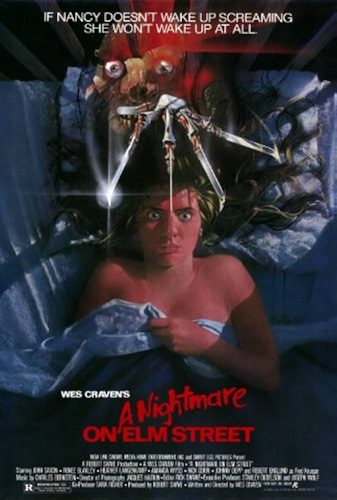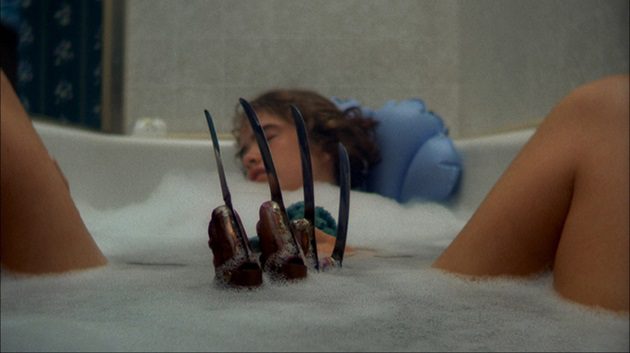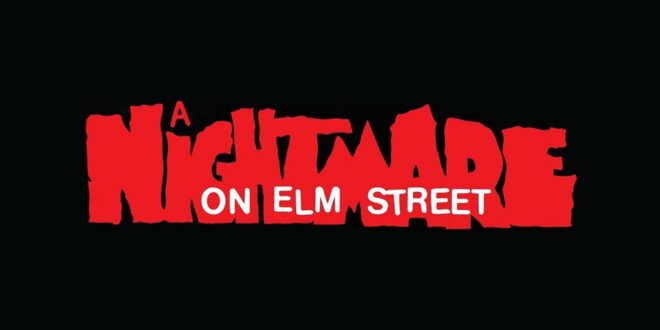A Nightmare on Elm Street, directed and written by Wes Craven, is the horror film that introduced the world to Freddy Krueger, an iconic slasher character portrayed by Robert Englund, and also put New Line Cinema on the map (it’s nicknamed “The House that Freddy Built” for a reason).
Who is Freddy Krueger? Known for his burned face, bladed glove, and red-and-green striped sweater, Freddy is a haunting figure who kills his victims in their dreams, which translates to real death in the waking world.
What’s The Story?
The film is set in the fictional town of Springwood, Ohio, where a group of teenagers, including Nancy Thompson (played by Heather Langenkamp), begins experiencing terrifying nightmares involving Freddy. These dreams are scary as hell, and gradually, Nancy prompts her mother (Ronee Blakley) to grudgingly reveal Freddy’s history as a child killer murdered by vengeful parents, who burned him alive for being “a filthy child murderer.” However, he returns as a supernatural entity to continue his terror in their children’s dreams.
Nancy, who becomes the primary protagonist, works to stay awake and find ways to end Freddy’s nightmare cycle, and the character is respected enough to be considered by some as “one of the most progressive female representations in the teen horror genre.” Of course, the film also stars John Saxon, Amanda Wyss, and “Nick Corri” (real name Jsu Garcia).

Why Practically Everyone Has Heard of Freddy Krueger
Obviously, A Nightmare on Elm Street had a significant cultural impact, helping to establish the “slasher” genre of horror in the 1980s alongside other films like Halloween and Friday the 13th. However, unlike those film franchises — where the masked maniacs are more like a grim, quiet executioners —, Freddy talks to his victims, revels in his kills, and comes across like a sadistic, wisecracking cat playing with his mice.
The film also marked a breakthrough role for Johnny Depp in his film debut, which was certainly an inspiration to keep acting and giving us films like Edward Scissorhands.
A Nightmare on Elm Street gained acclaim for its surreal take on horror, blending dreamscapes with reality, which became a hallmark of the series. It also created some classic horror lines, like “I’m your boyfriend now,” and that jump rope song: “One, two, Freddy’s coming for you…” Its success spawned an extensive franchise, including sequels, a TV series, a 2010 remake, and crossovers. Horror just would not be the same without Frederick!
Craven’s exploration of themes like trauma, vengeance, and the blurring line between dreams and reality contributed to the film’s lasting impact. The success of A Nightmare on Elm Street not only cemented Freddy Krueger as a pop-culture figure but also established Wes Craven as one of horror’s leading filmmakers.
Of course, the first film also established internal tropes for the franchise. Freddy vs. Jason (2003) has that memorable line of “Coffee. Make friends with it.” However, any Freddy fan knows Nancy established the coffee fixation well before Freddy ever tangled with Jason. Indeed, even though analyzing tropes has perhaps become an overrated aspect of horror reviews, it’s almost impossible to review anything without pointing out a few, and it’s impossible to see this film without noting its vast influence on supernatural horror.
Plus, let’s just say it: Freddy just looks cool. The hat, the sweater, the razor gloves, the swagger. Robert Englund just brought something serious to the role that’s next level, despite having a goofy sense of humor himself. It’s hard to balance all of the character’s elements, but Englund seemingly does it so easily in this flick, which is why people still get immersed all these years later.

What is the Nightmare? What is Reality?
Personally, I might still prefer Dreams Warriors over the original Nightmare on Elm Street (I have my reasons), but the power of this film just cannot be denied. The backstory is compelling, and so is the mystery of the ending.
My own theory about that? I think that, if you take it as a standalone film, it could be that Nancy is dreaming the whole time, after learning somewhere that her parents were involved in the fiery death of a neighborhood maniac, and she is perhaps imagining the killer having revenge. Perhaps she had recently read up on controlling one’s dreams, at the prompting of her boyfriend, and that might explain the “dream within a dream” thing. And the survival tactics book? Maybe she acquired that in real life, based on real fears after learning about the serial killer, and that became part of her dream.
Perhaps it’s not the best theory out there, but it’s something the film made me create as an explanation. See? Part of what makes A Nightmare on Elm Street great is that, even when there’s mystery, or what one might call “plot holes,” there’s always potential to explain it as the dream world blending with reality. So there’s almost a built-in way to shield it from criticism (well, at least in most cases).
How cool is that?
 PopHorror Let's Get Scared
PopHorror Let's Get Scared




